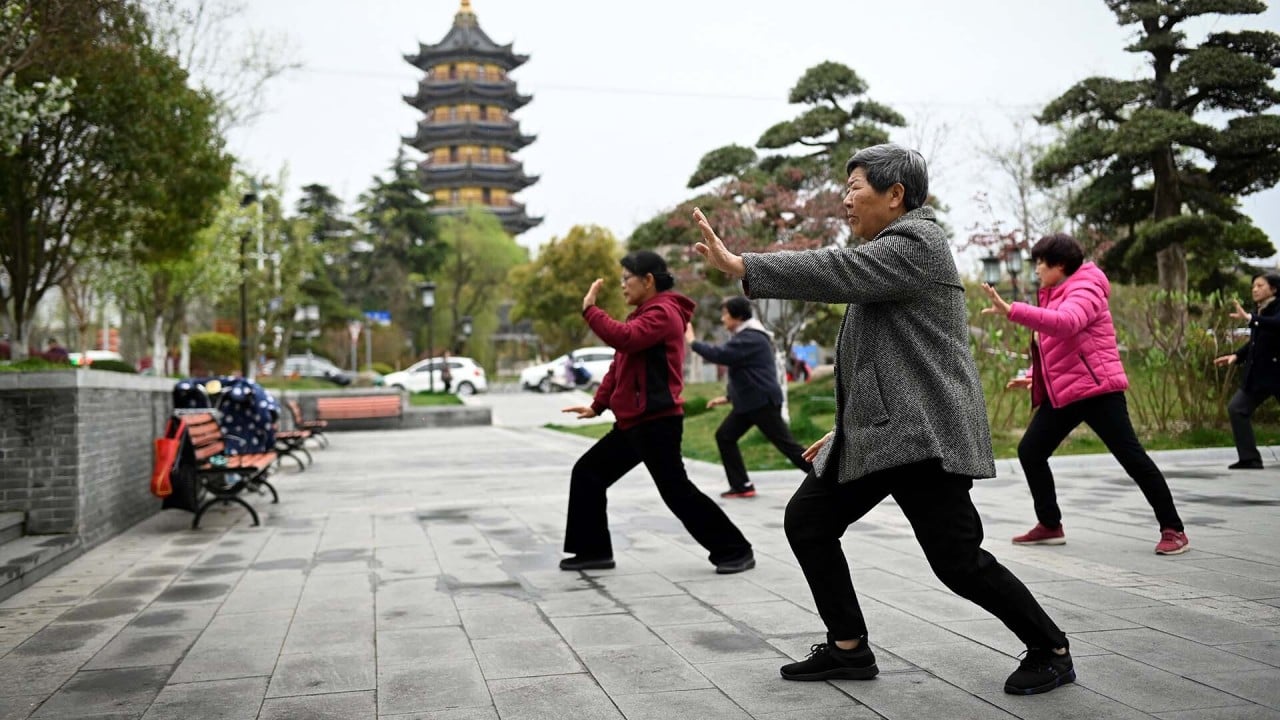[ad_1]
People in the age group of 15 to 59 years old dropped to 63.35 per cent of China’s total population of 1.412 billion in 2020. While people in the age group of 60 and over rose to account for 18.70 per cent.
“The ageing of the population has further deepened, and in the coming period [China will] continue to face pressure for long-term, balanced development of the population,” Ning Jizhe, NBS commissioner, said at a press conference during the release.
As the proportion of China’s elderly grows, however, they are
by the country’s rapid adoption of digital technologies, accelerated by the unprecedented speed and scale of the Covid-19 pandemic.
By the end of last year, China’s internet population jumped to 989 million people, an almost 10 per cent increase from March 2020, according to a report from the China internet Network Information Centre (CNNIC), as ride-hailing, fresh food delivery, and QR code-based “health codes” saw increased use.
People aged 60 accounted for 11.2 per cent of the total internet population, according to the same report, a big jump from the 6.3 per cent in March 2020.
However, as local headlines continue to highlight the digital generation gap with news of the elderly unable to access basic services at banks, hospitals, and public transport due to a lack of smartphone literacy, policymakers have begun to focus on addressing the widening gap between digital natives and the elderly.
In November, the State Council, the executive branch of China’s central government, announced it would launch specific policies to help its senior citizens catch up with its booming digital economy – in particular, to help the elderly make better use of smart technology to access medical treatment, recreational activities and public services.
China’s Ministry of Industry and Information Technology (MIIT) also published guidelines last month asking web pages and mobile apps to carry out
before the end of September, which included bigger and adjustable text sizes, text-to-speech, as well as a ban on plug-in ad links or floating ads.
Responding to Beijing’s call, and recognising the enormous financial potential the elderly market represents, some of China’s major consumer-facing tech firms have already been developing products aimed at senior users, a market which was estimated to be worth 3.79 trillion yuan in 2020, according to estimates by the China National Committee on ageing in 2019.

02:36
China’s ‘longevity city’ may offer road map to country’s greying population
Smartphone brands Huawei Technologies Co.,
, and all have their own “senior mode” on their phones, which have larger icons, larger text sizes, and screen-reading tools that make the phone easier for the elderly to use.
However, current efforts made by the internet giants still fall short of solving the wider social problem.
“Most senior users are not familiar with even the basic steps of using a smart device in the first place due to lack of instructions,” said Huang Zhaoqi, an analyst from investment research firm EqualOcean, adding that senior users, as digital immigrants, have limited ability to learn new technologies and products as fast as younger users.
In addition, the current market lacks enough smart devices designed for elderly users – projected to reach 480 million by 2050 – to meet their complex and diverse daily life needs, added Huang.
“There’s a need for companionship and entertainment programmes, as well as medical services, online shopping and voice-assisted technology,” Huang said.
But rather than teaching the elderly to use smart technologies to bridge the digital divide, enterprises and regulators should also leave open an option for those who are unwilling and incapable of integrating into the digital world, he added.
The mobile phone that 85-year-old retiree Li Hongwen’s son bought for her does not have a camera capable of scanning QR codes. Street vendors balk, she said, when she tries to buy things with cash.
“I don’t know how many years I have left. Why waste that money on buying a new phone?” Li said.
[ad_2]
Source link